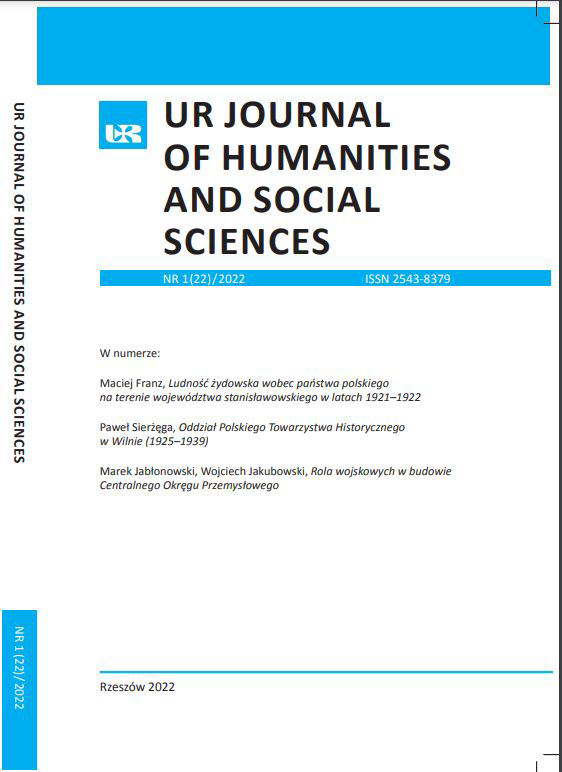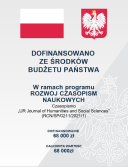Oddział Polskiego Towarzystwa Historycznego w Wilnie (1925–1939)
DOI:
https://doi.org/10.15584/johass.2022.1.3Słowa kluczowe:
Uniwersytet Stefana Batorego w Wilnie, Polskie Towarzystwo Historyczne, Oddział w WilnieAbstrakt
Po odzyskaniu niepodległości historycy zrzeszeni w towarzystwach naukowych działających w warunkach rozbiorowych stanęli przed wyzwaniem ich reorganizacji. Najważniejszym reprezentującym ogół miłośników Klio stowarzyszeniem pozostawało utworzone we Lwowie w 1886 r. Towarzystwo Historyczne. Przyjęcie przez TH nowego statutu w 1924 r. i zmiana nazwy na Polskie Towarzystwo Historyczne nie tylko prowadziło do unifikacji instytucji, nadając jej charakter ogólnopolski, ale i regulowało zasady powoływania oddziałów zamiejscowych. Jednym z nich, skupionym wokół reaktywowanego Uniwersytetu Stefana Batorego, był Oddział PTH w Wilnie. Charakterystyka jego działalności pozwala ocenić rolę, jaką środowisko wileńskie odegrało w upowszechniania nauki, ale też określić miejsce Oddziału w strukturze Towarzystwa. W okresie międzywojennym Oddział Wileński PTH nie przejawiał większej aktywności naukowej. Skupiano się niemal wyłącznie na realizacji celów statutowych PTH, co znalazło wyraz w organizowaniu spotkań naukowych i udziale w Powszechnych Zjazdach Historyków Polskich, z których dla miejscowego środowiska najważniejszym był zjazd w Wilnie zorganizowany w 1935 r. W warunkach lokalnych większą popularnością cieszyło się działające od 1907 r. Towarzystwo Przyjaciół Nauk w Wilnie, angażujące zarówno środowisko uniwersyteckie, jak i miejscowych archiwistów, bibliotekarzy i miłośników historii.Downloads
Download data is not yet available.
Pobrania
Opublikowane
2022-03-30
Jak cytować
Sierżęga, P. (2022). Oddział Polskiego Towarzystwa Historycznego
w Wilnie (1925–1939). UR Journal of Humanities and Social Sciences, 22(1), 51–79. https://doi.org/10.15584/johass.2022.1.3
Numer
Dział
Artykuły
Licencja
Prawa autorskie (c) 2022 Wydawnictwo Uniwersytetu Rzeszowskiego

Utwór dostępny jest na licencji Creative Commons Uznanie autorstwa – Użycie niekomercyjne 4.0 Międzynarodowe.



